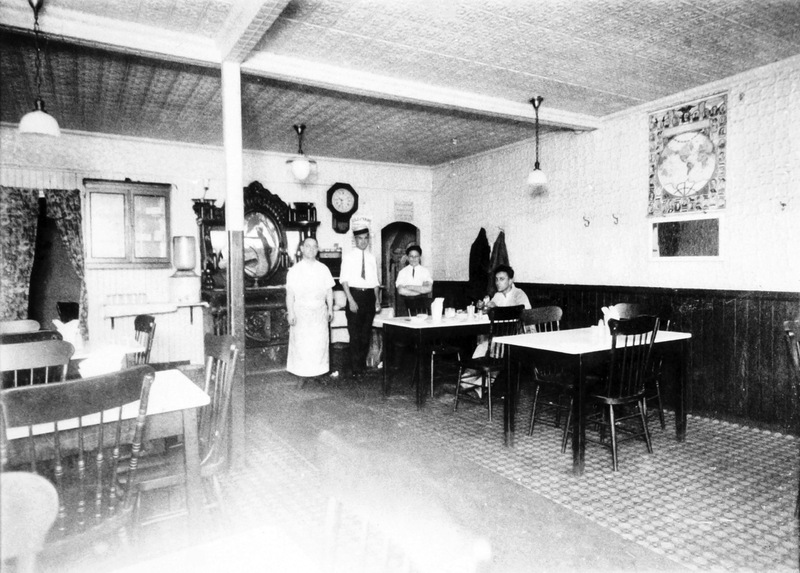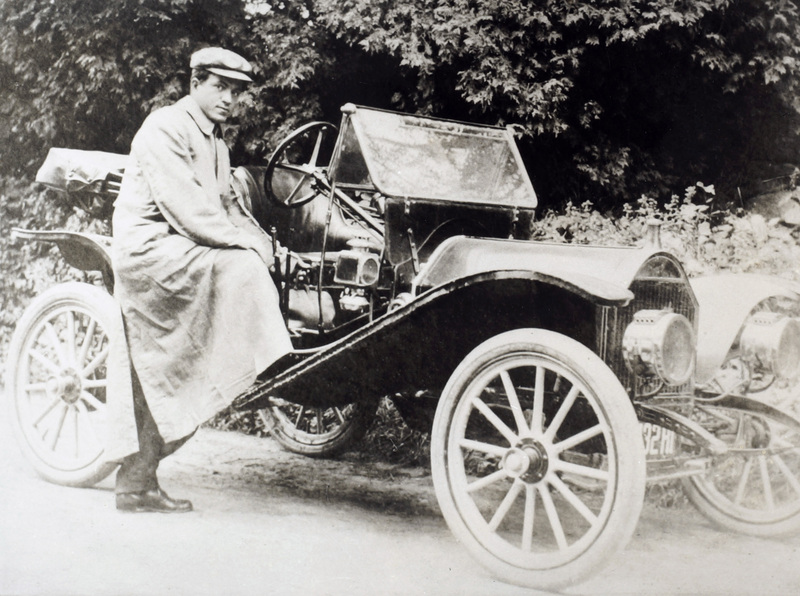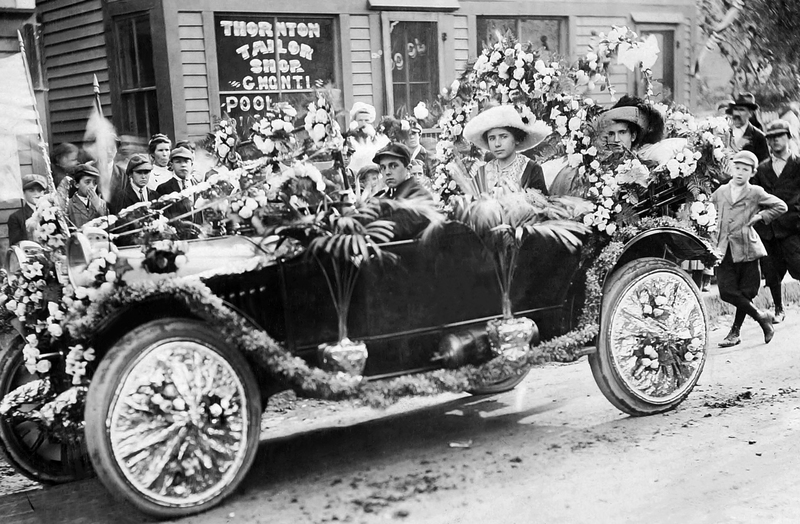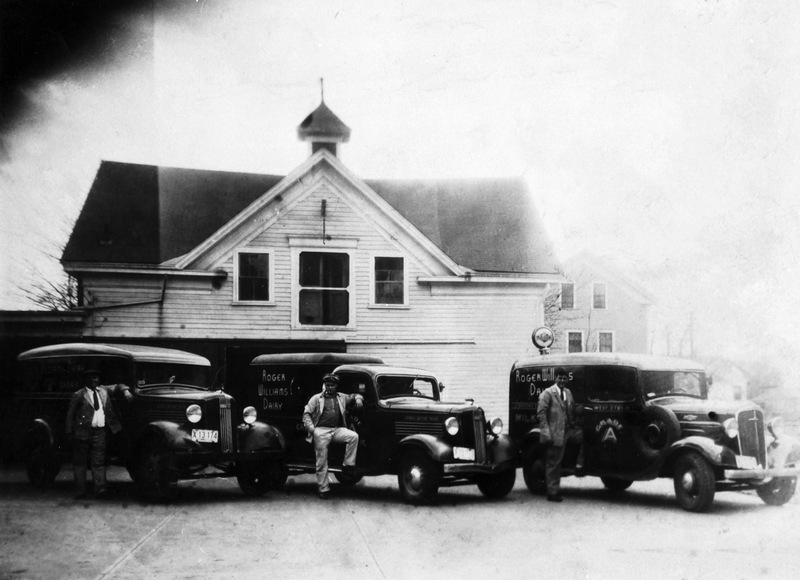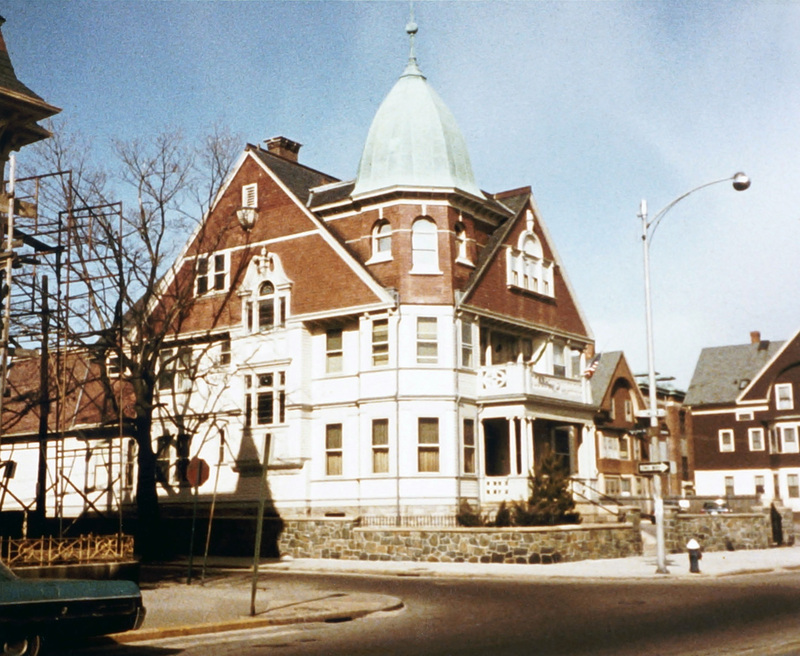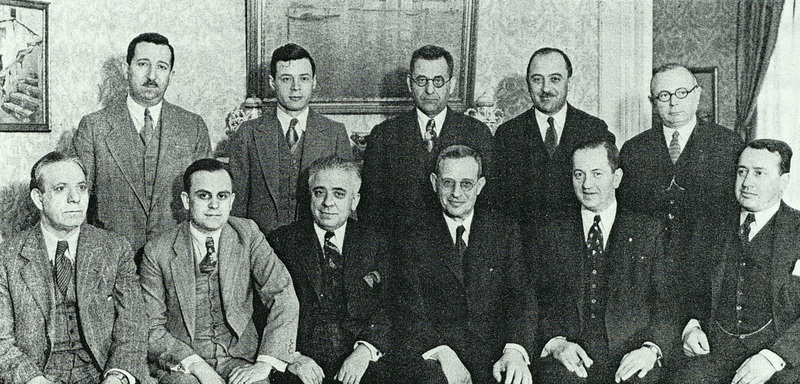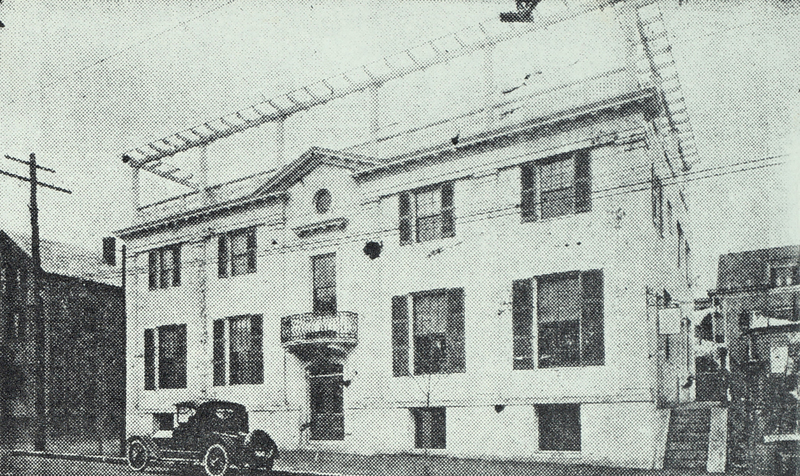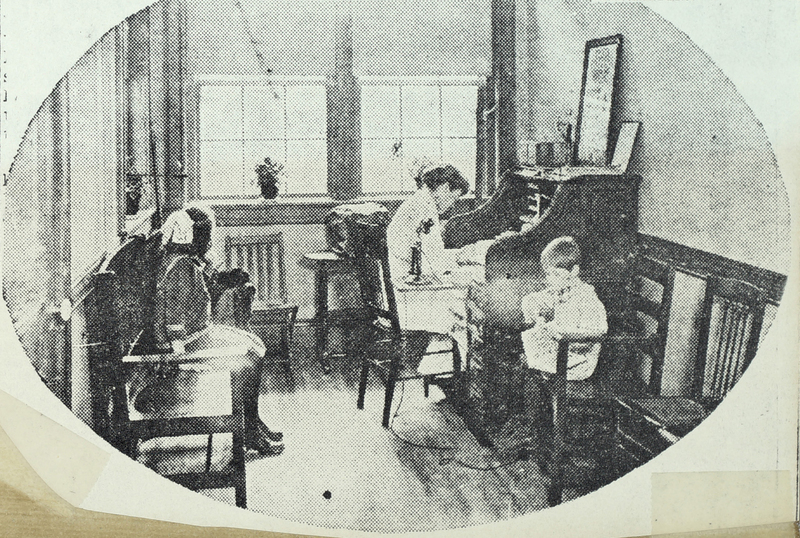Developing Federal Hill
Naming a place
Prior to urban development, Federal Hill had no colonized name. Residences were sparse between fields for grazing cattle and raising crops.1 Providence’s bustling life occurred on the opposing College Hill across the Moshassuck River. This is where Roger Williams, founder of Providence had settled first and eventually where factories such as the American Screw Company and others would place themselves.2 Being closer or tied to the river indicated not only the feasibility of Providence’s preindustrial maritime trade but also the oncoming forefront of industrialization which farmland could gift nothing to.
On July, 4th 1778 an ox roast was organized in celebration of both Independence Day and the ratification of the new Constitution of the United States of America. Rhode Island however, had not ratified it yet. This grouping was a Federalist gathering and was stormed upon by Colonel William West, with his Anti-Federalist army in tow. The ox roast itself was not stopped but reframed by the Anti-Federalists to refute a connection to the Constitution's acceptance and forcefully impose the political terseness of each side.3
In the same year, Amos Atwell, a prominent local businessman, alongside other partners began to transform Federal Hill into an urban center. The Hartford-Killingly thoroughfare was developed and businessmen started the construction of storefronts and larger dwellings.4 Under threats of Providence’s secession from Rhode Island, did the state ratify the Constitution - May 29, 1790. Another celebration was hosted in the same area. Two recently developed streets were renamed for Federal figures (Bradford and Olney) and the area where the clash had happened two years before deemed Federal Hill.5
During the following years, Federal Hilll would develop further and its limits would grow. Bounded by Olneyville, Valley and the West End neighborhoods, Federal Hill became a home to at first to its Anglo developers but be seceded to the rapidly growing immigrant population arriving to work in the factories. The first immigrant group to settle in the area in any large capacity was the Irish throughout the 19th Century. This migration was mostly characterized by the famine in Ireland in 1845. Emigration to the United States and specifically Providence would be to join small family contingencies that had settled as early as the 1820s.
By 1885, those of Irish descent made up 56% of Providence’s residents, settling across Fox Point, Olneyville, Manton, South Providence, Federal Hill and other neighborhoods. Many of these neighborhoods were categorized by crime and disease due to isolation, overpopulation, and discriminations by nativist Providence citizens. Many Irish traditions were challenged for their communal bases, in the face of a rise of individualism that industrialization and neoliberalism depend upon that along with cultural differentiation, coined Irish Americans as an “other.” Because of these violently opposed sentiments, the Irish would struggle to find work and enter at positions with poor conditions, housing and pay. Federal Hill was one such highly populated neighborhood of poor Irish workers, building construction shoddy tenements at best, in poor upkeep to code.6
Many of the reasons the Irish leaving the neighborhoods they had once populated grandly, was the overpopulation of new immigrants, the Italians and Portuguese, but also an upward mobility gained by participation with the Catholic church and the climbing of class status. Following the 1880s to 1910 the Irish would benefit the new immigrants coming in at the bottom of the scale by slowly rising to positions of managerial, proprietor, and public office in the Democratic party. . The Irish would seize the means of middle class citizenship and much of their community secede previous Irish-centered neighborhoods to new immigrant populations.7
Community and Mutual Aid
Once the Italian colony was established on Federal Hill I think I’d say that they came up with the first social security system that ever existed. They used to have societies that you would contribute so much, a little something a week, and when something happened in your family they helped you out. Not that you could live a life of luxury but you could get along.
…They had to make it on their own, but we did have places that - they worked as like a social security. They were the barroom. If you were out of a job you went to the barroom and they had what you call leaders there that would direct you to certain places to get a job. They weren’t the best jobs in the world but they got you a living.
Nicolas Lucarelli, June 28, 1978
Federal Hill Project
The Italians would call Federal Hill their home for similar reasons to the Irish; cheap tenement housing nearby to work. Many were not families but men coming to work in the textile mills of Olneyville. Communal ties were weakened and family-focused values of patriarchal structure, power and responsibility met with a world focused on the individual laborer’s dilemma. In being distanced from family, the creation of fraternal orders and community organizations based on ethnic sameness operated as institutions where Italian culture could be preserved as well as familiar ties kept strong.
Mutual aid societies consisted of members paying dues for the security of items expansive of immigrant life, centered around the communal benefit of one’s place being uplifted and assigned value alongside fellow compatriots.8 These included the economic and spatial shared displacements of Italian immigrants’ situational stasis in Providence.
In 1882 the development of the first Providence mutual aid society was borne: Societa Unione e Benevolenza (Society of Union and Benevolence). Societa Unione e Benevolenza served initially to cover sickness and death benefits. In 1896, the Italo American Club of Rhode Island was founded as an Italian businessmen’s association.9 Several others would form and continue to remodel through these years, one of the later still standing groups, such as The Aurora Club, a fraternal order founded in 1932 by socialite Italian American professionals.10
In 1914, on the approach of World War I, retailers began arbitrarily raising prices to merchants, feigning the oncoming issues on supply. Preceeded by meat prices raising in Jewish butcheries, wholesale Italian foodseller Frank P. Ventrone raised the prices of all foodstuff offered at his store on Federal Hill. Betrayal was felt throughout the neighborhood, perhaps misdirected at the issue of Ventrone’s control over retailer prices, but formulated around the issues of starvation and poorness that Federal Hill’s citizens faced.11
In raising the price of culturally relevant Italian foodstuff such as pasta and macaroni, access to a last preserved culture even in poorness was denied to the community. Feelings of anger, desperation and loss of cultural integrity riled the community of Federal Hill into rebellion at a rally on August 29, 1914. Ventrone’s store was stormed by brick throw and looting of foodstuff to person’s needs. Through the day, the riots spread from Ventrone’s store to other inaffordable items (liquor, clothing, etc.). Violent altercations with police caused an unknown amount of civilian casualties and injured ten of the police force.12
The situation was settled between Ventrone and certain members of the Italian Socialist Federation but could not satisfy agreements with other wholesale merchants, affected storefronts unrelated to the inciting issue of food access, nor the non-Socialist members of the neighborhood. The riots also continued after the first in varied and unorganized forms.13 The insurrections banded those who had been affected most to each other, and the poorest members of Federal Hill gained another means to link shared experience.
Whereas many considerations of Italians were apolitical, mutual aid societies, clubs, and community action acted as ethnic solidarity. With similar intentions of finding work, and cultural sameness, highly dense Italian neighborhoods created the Italo American identity through new pressures of comraderie. By banding with fellow Italian immigrants (and the new generation of Italian Americans), whether they be from nearby towns to theirs in Italy or not, they would be able to protect similar values and interests seemingly lost in the American lifestyle.
Most non-Italian organizations failed to involve themselves with the immigrants of Providence other than the IWW’s involvement in the Macaroni Riots14 and a settlement house originally called the Sprague House. Later renamed as Federal Hill House, its initial intent was assimilation of immigrant lifestyle through womens groups. This manipulation sided them along anti-immigrant motions such as the Patriot Acts because the middle-class Anglo women who ran the operations thought they knew best what would assist their poor “not-yet” Americans.15 They could not perceive that middle-class lifestyles were both inaccessible and unwanted for Federal Hill residents.
Following resistance to the assimilation programs that cultural erasure caused the leaders of Federal Hill House to develop as a community space and restructure services for community need. Providing recreation facilities, doctor visits, and a milk station for women and their children the shining features that its patrons would remember fondly.16
...you don't remember the old Federal Hill House. Well, there was a roof was all fenced in and we would go there summers and play, you know, volleyball and basketball, whatever, you know. You'd go up and down and then downstairs...they were helpful in that way...they had sort of a clinic for the real poor, you know, that couldn't afford a doctor. They would go there and they would take care of them. In fact I think Federal Hill House was very very good at the time.
Joe Apicerno, June 28 1978
Federal Hill Project
1 Ubaldo U. M. Pesaturo, The Italo-Americans in Rhode Island Their Contributions and Achievements, Uraldo U. M. Pesaturo, 1936, pp. ; Patrick T. Conley, People, Places, Laws and Lore of the Ocean State: A Rhode Island Historical Sampler, Providence: Rhode Island Publications Society, 2012, pp. 197-199.
2 John Hutchins Cady, The Civic and Architectural Development of Providence 1636-1950. Providence: Akerman Standard Press, 1957, pp. 3-4; Richard B. Harrington, “National Register of Historic Places Inventory - Nomination Form: Moshassuck Square,” Rhode Island Historical Preservation Commission, 1970.
3 Conley, Ibid; William R. Staples, Annals of The Town of Providence, from its First Settlement, to the Organization of the City Government, in June 1832, Providence: Knowles and Vose, 1843, pp. 329-334.
4 Joseph R. Muratore, "Amos Atwell, businessman and leader," The Echo Providence], 18 Oct. 1979: pp. 20-21.
5 Conley Ibid.
6 Evelyn Savidge Strene, Ballots and Bibles: Ethnic Politics and the Catholic Church in Providence, Cornell University Press, 2004, pp. 36-43; Raymond J. McKenna Jr., “When Federal Hill housed the Irish,” Providence Journal, 17 Mar. 2011: pp. C-11.
7 Sterne, Ibid; Mckenna Jr., Ibid; Leo E. Carroll, “Irish and Italians in Providence, Rhode Island, 1880-1960,” Rhode Island History, Rhode Island Historical Society, volume 28, number 3, August/Summer 1969, pp. 69-72
8 Paul R. Campbell and Patrick T. Conley. The Aurora Club of Rhode Island: A Fifty Year History, Providence: The Aurora Civic Association, 1982, pp. 39, 30-31.
9 Stefano Luconi. The Italian-American Vote in Providence Rhode Island, 1916-1948. New Jersey: Farleigh Dickinson University Press and Rosemont Publishing & Printing Corp. (Associated University Presses), 2004, pp. 19
10 Campbell and Conley, pp. 35-36.
11 Joseph W. Sullivan, Marxists Militants and Macaroni: The I.W.W. in Providence's Little Italy, Rhode Island Labor History Society, 2000, pp. 50-51.
12 Ibid, pp. 56-63; Sterne, pp. 105-107.
13 Sullivan, pp. 67, 71-73, 76-77.
14 Ibid, pp. 51-52, 56-57. Figures such as Louis Nimini and Domenico Mauriello were local IWW and socialist leaders, who were instrumental in connecting Italians to the union’s power and ideals (in comparison to the local A. F. of L. who did not wish to reach immigrants without their assimilations).
15 Ibid, 27; J. Ellyn Des Jardins, “Federal Hill House: Its Place in Providence and the Settlement Movement.” Rhode Island History, vol. 54, no. 4, 1996, pp. pp. 103-107.
16 Jardins, pp. 112-117.
